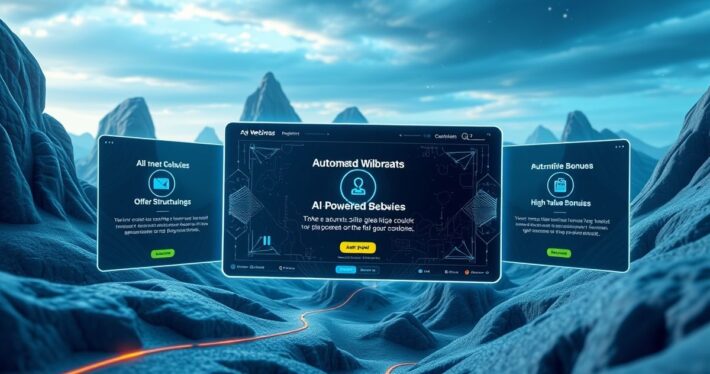Exploring AI’s role in multilingual webinar hosting.
The Rise of Multilingual Webinars in a Globalized World
In today’s interconnected world, hosting a webinar in just one language is like speaking to only half the room. According to recent data, 40% of consumers won’t buy from websites that aren’t in their native language. That’s where AI steps in, revolutionizing the way we host multilingual webinars. Imagine being able to deliver your message to a global audience—fluently, accurately, and professionally—without the need for a team of translators or language experts. Sounds like a game-changer, right? Let’s dive into how AI is making this possible.
Why Multilingual Webinar Hosting Matters
Let’s be honest: language barriers are one of the biggest obstacles to global growth. Whether you’re a startup looking to expand or an established brand entering new markets, your ability to communicate effectively can make or break your success. Multilingual webinars allow you to connect with diverse audiences on a personal level, fostering trust and engagement. But traditional methods—think hiring translators or recording separate sessions—are time-consuming, expensive, and often lack the authenticity needed to resonate with viewers.
AI-powered tools are flipping the script, enabling businesses to host webinars that feel native to every audience. From real-time translation to culturally relevant content adaptation, AI is not just removing barriers—it’s creating opportunities.
How AI Transforms Multilingual Webinar Hosting
So, what exactly does AI bring to the table? Here’s a breakdown of the key features and benefits:
-
Real-Time Translation
Gone are the days of awkward pauses and misinterpretations. AI-powered tools like Otter.ai and Zoom’s live transcription feature can translate speech into multiple languages in real time. Imagine hosting a webinar in English while attendees in Japan, Germany, and Brazil follow along seamlessly in their preferred language. It’s like having a personal translator at your fingertips. -
Speech-to-Text and Voice Modulation
AI doesn’t just translate—it adapts. Tools like Google’s WaveNet can generate lifelike speech in different languages, maintaining your tone and pace. This is particularly useful for pre-recorded webinars where you want to maintain a natural flow across languages. -
Slides That Speak the Local Language
Translating slides manually? That’s so 2010. AI tools like Canva’s Magic Resize and Prezi’s AI-powered features can automatically adapt your presentation’s text and visuals to suit different languages and cultural contexts. Think of it as a one-stop shop for global-ready content. -
Cultural Sensitivity and Localization
AI goes beyond literal translation. It can analyze cultural nuances to ensure your message resonates with each audience. For example, a joke that lands in the U.S. might fall flat in Japan. AI tools can suggest alternatives that keep your content engaging and appropriate. -
Interactive Q&A Across Languages
One of the biggest challenges in multilingual webinars is handling audience questions. AI-powered chatbots and live Q&A tools can translate questions and answers in real time, ensuring no one feels left out.
Real-World Application: A Case Study in Action
Let’s take a look at how a global SaaS company used AI to host a multilingual webinar series. The company wanted to expand into Latin America but faced challenges with language and cultural differences. Here’s how they did it:
- Step 1: They used AI to translate their slide decks and scripts into Spanish and Portuguese, ensuring the content was culturally relevant.
- Step 2: During the live webinar, they leveraged real-time translation tools to deliver their presentation in English while attendees followed along in their preferred language.
- Step 3: They used an AI-powered chatbot to manage the Q&A session, translating questions and answers seamlessly.
The result? A 40% increase in engagement from Latin American audiences and a 25% boost in post-webinar conversions. Not bad for a day’s work, right?
Overcoming Challenges in AI-Powered Multilingual Webinars
While AI is a powerful tool, it’s not without its challenges. Here are a few potential pitfalls and how to navigate them:
-
Accuracy Issues
AI translation isn’t perfect. Misinterpretations can happen, especially with idiomatic expressions or industry-specific jargon. To mitigate this, always review translations and consider hiring a native speaker for quality assurance. -
Cultural Missteps
AI can help with cultural sensitivity, but it’s not infallible. Take the time to research your target audience’s cultural norms and preferences. -
Technical Glitches
AI tools rely on technology, and technology can fail. Always have a backup plan, such as pre-recorded segments or a live translator on standby.
Tools You Need to Get Started
Ready to take your webinars global? Here are some AI-powered tools to help you get started:
| Tool | Feature | Best For |
|---|---|---|
| Zoom | Real-time transcription and translation | Live multilingual webinars |
| Otter.ai | Speech-to-text and translation | Post-webinar content localization |
| Google WaveNet | Voice modulation | Pre-recorded webinars |
| Canva Magic Resize | Automated slide translation | Slide deck localization |
| ChatBot.com | Multilingual Q&A support | Audience engagement |
The Future of Multilingual Webinar Hosting
AI is still evolving, and its potential for multilingual communication is limitless. Imagine a future where AI can not only translate your words but also analyze audience sentiment in real time, adjusting your tone and content on the fly. Or a world where AI-generated avatars deliver your webinar in multiple languages simultaneously. The possibilities are endless.
For now, though, AI is already making it easier than ever to host multilingual webinars that feel personal, professional, and impactful. Whether you’re a small business or a multinational corporation, these tools can help you break down language barriers and connect with audiences on a global scale.
Final Thoughts
So, what’s the takeaway? AI isn’t just a tool—it’s a bridge. A bridge that connects you to audiences you might never have reached otherwise. It’s not about replacing human connection; it’s about enhancing it. By leveraging AI-powered tools, you can host webinars that are as engaging in Tokyo as they are in Toronto.
Now, here’s the question: Are you ready to take your webinars global? Because with AI, the world is waiting.


